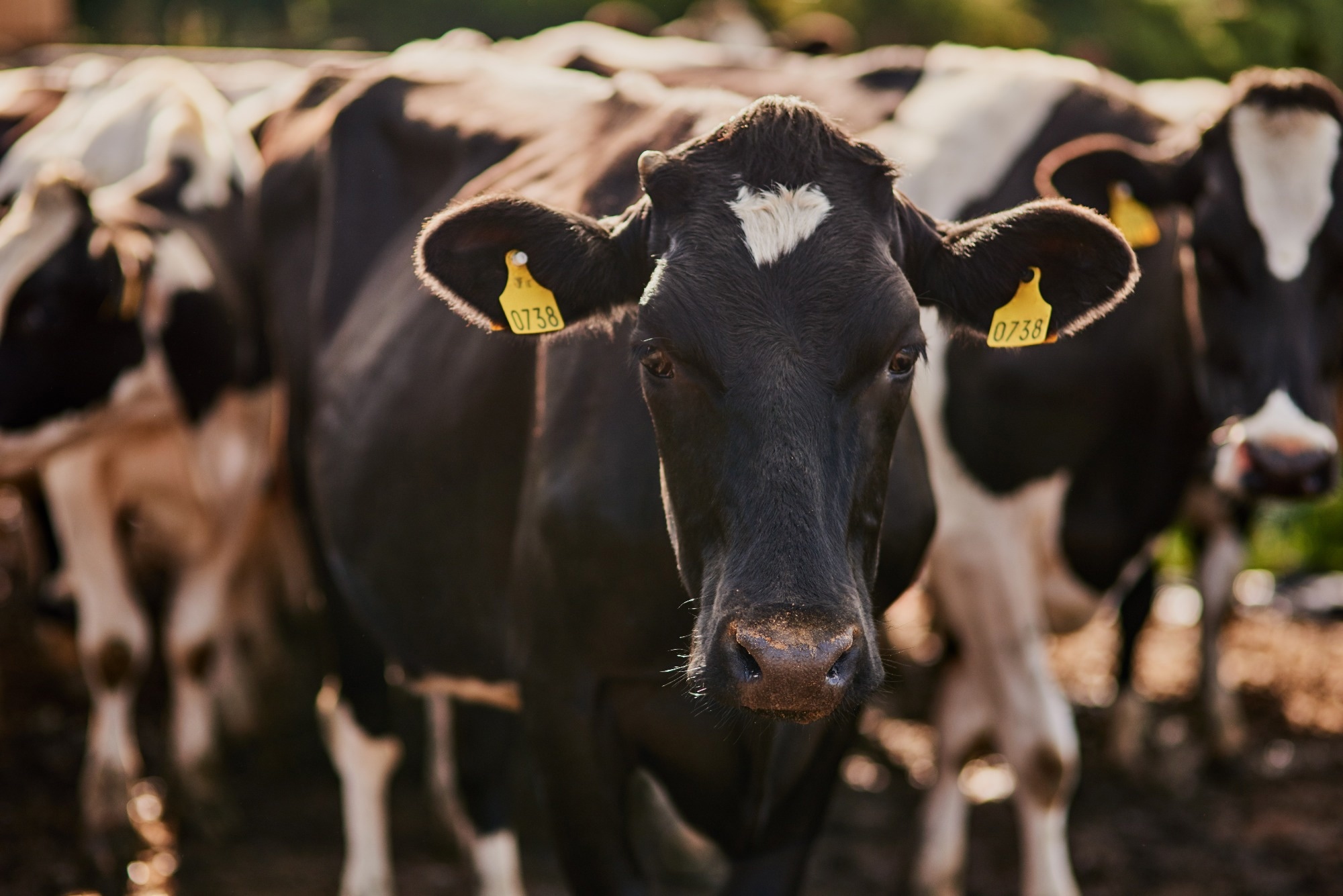The recent coronavirus disease 2019 (COVID-19) pandemic has highlighted the dangers posed by zoonotic diseases when viral spillovers across species boundaries result in widespread infections with high morbidity and mortality rates due to the lack of existing immune defense mechanisms in these species.
In a recent study published in Nature, researchers from the United States (U.S.) reported a viral spillover of the highly pathogenic avian influenza virus belonging to the hemagglutinin 5 neuraminidase 1 (H5N1) 2.3.4.4b clade among herds of dairy cattle in multiple states in the country.
 Study: Spillover of highly pathogenic avian influenza H5N1 virus to dairy cattle. Image Credit: PeopleImages.com - Yuri A/Shutterstock.com
Study: Spillover of highly pathogenic avian influenza H5N1 virus to dairy cattle. Image Credit: PeopleImages.com - Yuri A/Shutterstock.com
Background
The Guangdong or goose lineage of the highly pathogenic H5Nx avian influenza virus is believed to have emerged in 1996 in China and belongs to the Orthomyxoviridae family of viruses.
Although the virus was initially only detected in poultry, it was detected in 2002 in wild birds, indicating a spillover into wild avian populations.
Due to multiple reassortments involving other influenza viruses, and numerous antigenic changes, the lineage was further divided into eight clades spanning three subtypes based on neuraminidase — N1, N6, and N8.
The recent global avian influenza outbreaks have been due to the 2.3.4.4b clade of H5N1, which also poses the potential danger of infecting humans and various other mammalian species.
About the Study
In the present study, the researchers reported the spillover of the 2.3.4.4b clade of the H5N1 virus into herds of dairy cattle in four U.S. states and described the epidemiological, pathological, and clinical findings from their investigation of the avian influenza infection among cattle from nine farms.
Spillover events of the 2.3.4.4b clade of the H5N1 virus have already been reported in various wild and domestic mammalian species such as cats, bears, red foxes, harbor seals, polar bears, gentoo penguins, and Antarctic fur and elephant seals.
One incident of human infection was reported from a poultry worker but with mild symptoms and rapid and complete recovery. However, mortalities were reported among harbor seals, indoor cats, and one striped skunk.
The first reported event of viral crossover into ruminant species was in 2024 from Minnesota from a juvenile goat, with chickens in the same facility testing positive for the virus.
Between January and March 2024, field veterinarians reported morbidity in dairy cattle due to an unknown disease in the states of New Mexico, Texas, and Kansas.
The researchers conducted epidemiological investigations among herds of dairy cattle from nine farms across the states of Texas, Kansas, New Mexico, and Ohio. Samples were also collected from domestic cats, pigeons, raccoons, and great-tailed grackles from these farms.
Different types of samples, including nasal swabs, milk, serum, whole blood, urine, feces, and various types of tissues, such as lung, mammary gland, lymph nodes, and large and small intestine, were collected.
Blood, nasal swabs, and milk samples were collected sequentially and investigated for viral shedding duration.
Furthermore, paired samples from animals exhibiting infection symptoms and healthy animals were compared to understand viral shedding.
Additionally, animals were also submitted to the Animal Health Diagnostic Center at Cornell University and the Veterinary Medical Diagnostic Laboratory at Texas A&M University for necropsies.
Viral loads were assessed based on real-time reverse-transcriptase polymerase chain reaction (rRT-PCR) analysis of viral ribonucleic acid (RNA) extracted from the samples. Additionally, hemagglutination inhibition was conducted on the serum samples to examine the seroconversion in infected animals.
Viruses were also isolated from the samples and identified using a combination of rRT-PCR, immunofluorescence assay, and whole genome sequencing. Viral loads were determined using serial dilutions of samples and viral titrations.
Additionally, viral tropism and distribution in tissues were evaluated using immunohistochemistry and in-situ hybridization analyses of tissue samples.
Major Findings
The study reported that infected dairy cattle exhibited various clinical signs, such as respiratory distress, changes in fecal consistency, decreased feed intake, and lower and abnormal milk production.
Furthermore, viral shedding and the RNA of the highly pathogenic H5N1 avian influenza infection were detected consistently in milk samples collected from infected cows.
The immunohistochemical and in-situ hybridization analysis also indicated a distinct viral tropism towards the epithelial cells of the mammary gland alveoli in infected cows.
Furthermore, the whole genome analysis suggested that multidirectional viral transmissions were occurring across species, as the viral whole genome was detected from the samples collected from birds, dairy cattle, raccoons, and domestic cats on the farm.
The viral loads in the milk samples from infected cows and the mammary gland tissue samples were also high.
Of the various types of samples collected, the most frequent observations of viral shedding were in the milk samples. Urine and nasal swab samples showed a lower frequency of viral shedding, while fecal samples reported no viral RNA.
Conclusions
Overall, the results highlighted the highly pathogenic H5N1 avian influenza virus of the 2.3.4.4b clade's ability to cross species boundaries and infect multiple avian and mammalian species.
Since the farms from where these infections were reported are along the migratory bird flyway in the Central North American region, and the same genotype of the H5N1 avian influenza virus was detected in migratory birds along the region, it is believed that the virus was introduced through wild migratory birds. However, more molecular epidemiological studies are required to make conclusive inferences.
Journal reference:
-
Caserta, L. C., Frye, E. A., Butt, S. L., Laverack, M., Nooruzzaman, M., Covaleda, L. M., Thompson, A. C., Koscielny, M. P., Cronk, B., Johnson, A., Kleinhenz, K., Edwards, E. E., Gomez, G., Hitchener, G., Martins, M., Kapczynski, D. R., Suarez, D. L., Morris, A., Hensley, T., & Beeby, J. S. (2024). Spillover of highly pathogenic avian influenza H5N1 virus to dairy cattle. Nature. doi: 10.1038/s41586024078494. https://www.nature.com/articles/s41586-024-07849-4